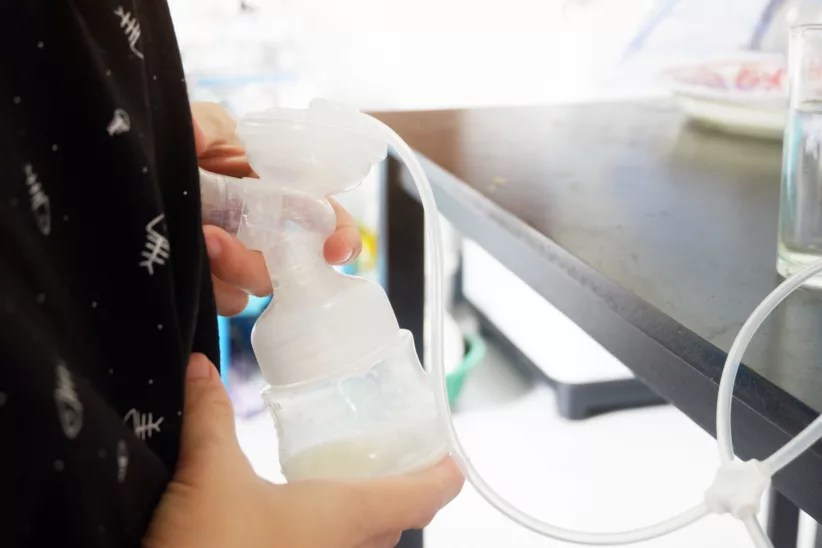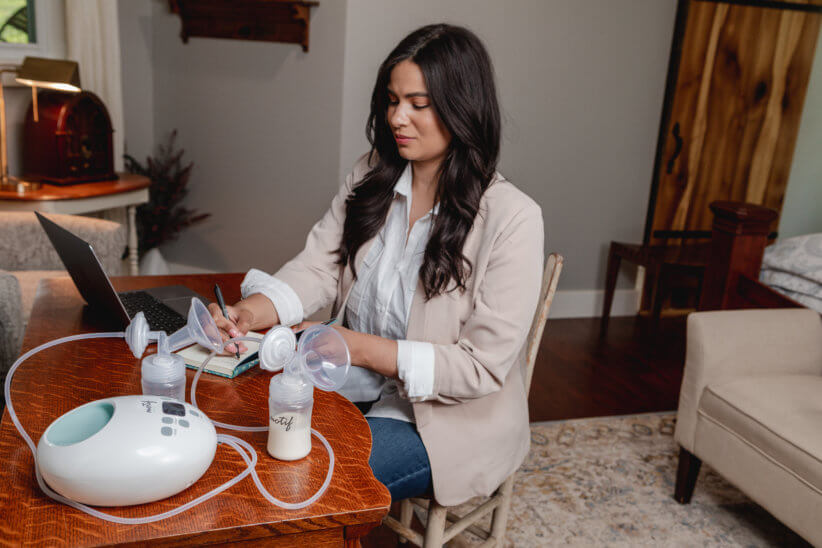
PUMP Act: Understanding this New Law (and what it means for breast pumping mothers while working)
Some of us mothers face multiple menaces in the workplace, but one major one is when you return to work after maternity leave and your company has not devoted adequate support and space to pump breast milk. And many of us have our stories- especially those who tried to pump in closets, toilet stalls, and uncomfortable nooks. Yet, the goal of keeping the milk supply going once we return to the office is essential, especially if you wish to continue breastfeeding your baby breastmilk.
The reality of being able to pump at work could have a better record. Stats and research have shared that 40% of women have had access to break time and private space to pump. And while 40% may seem like a good number-this means that 60% did not have the needed accommodation to support them in their breastmilk journey for their child.
This is why the PUMP Act which was enacted on April 28. 2023 is important as moms in the US now have a law that firmly states their breast pumping rights. Here are some key points of this new law for pumping moms working in office and remotely.
What Is the Pump Act?
While The PUMP Act is a new law, it has a history. It is rooted first in The Fair Labor Standards Act of 1938 and then in The Break Time for Nursing Mothers Provision, which was part of the 2010 Affordable Care Act. Why the Pump Act is important as it is now a law that women be given time and space to pump. Another vital part of the Pump Act is that pumping time is counted as time performed, meaning the employee does not need to make the time up or work later. This is regardless of whether the mother is in a corporate office or working at a minimum wage. If they do not receive the appropriate time and space to pump, they can file a lawsuit against their employer. Samantha Huggins CD (CHB),CLC shares, “The PUMP act is step towards acknowledging the unseen double duty of lactating parents in the workforce. When we put forward oversimplified policy, there is no room for complexity, which is the reality of American Parenthood Culture. I see the PUMP act as the next step in assurances while we continue the fight for equitable parental leave.”
While the PUMP Act is not perfect (I’ll get more into that in a bit), it is a huge step forward in supporting pumping mothers and, most importantly, helping them while she stays at their job. Sheila Dukas-Janakos, Co-Founder of Healthy Horizons, who sets up corporate lactation rooms and maintenance as well as breastfeeding consultations with healthcare professionals, has shared, “Women leave the workplace if they are not supported- emotionally and what with their body needs.”

Who is affected by the Pump Act
The Pump Act means 9 million more US employees are now covered when they choose to pump at work (and remotely) for up to one year after birth; this includes nurses and teachers, which in the past, these employees’ rights were given by the employer itself; with the Pump Act, the law is meant to protect when the employer does not.
Who is not included in this law?
A big caveat. All pregnant flight crews and flight attendants do have a right to reasonable accommodations for pregnancy, childbirth, and related medical conditions with the upcoming law Pregnant Workers Fairness Act. Unfortunately, flight crews and flight attendants are not included in the PUMP Act law, meaning that accommodations must be made per each airline company’s policy. Let’s hope this changes soon.
And while Motorcoach Service Operators and Rail Carriers do have rights, the law is at a later date and does have differences in the terms. A reliable resource on breastfeeding rights, U.S. Breastfeeding Committee, explains this all a bit more in-depth.
Also, the law’s fine print is ‘birth,’ meaning that the law is tied to the child being birthed by a mother. If a mother has adopted her child and can breastfeed, they are still not supported by this law. Sheila Dukas-Janakos of Healthy Horizons stated that in the many years she had provided services to a corporation, she has never seen a company not extend breastfeeding rights as an accommodation to an adoptive mother. That is good news, but let’s hope this is amended soon.
Lactation Room
An ideal lactation room will have a comfortable chair, a small or medium size fridge, a sink, space for pumps to store, and a microwave (to sanitize.) According to Sheila Dukas-Janakos and Cassi Janakos of Healthy Horizons, “The room cannot be a bathroom; it must be shielded from view and free from intrusion from coworkers and the public.”
More Key Points of the Pump Act
- The law covers the mother one year after their baby’s birth
- An employee can file a non-compliance with the U.S. Department of Labor Wage and Hour Division (WHD) if a lactation space has not been created; the employer has ten days to comply
- All companies, regardless of size, must follow the law; however, if a company has less than 50 employees, they may be excused from complying if these breaks and the space would be problematic and result in “undue hardship.”





















